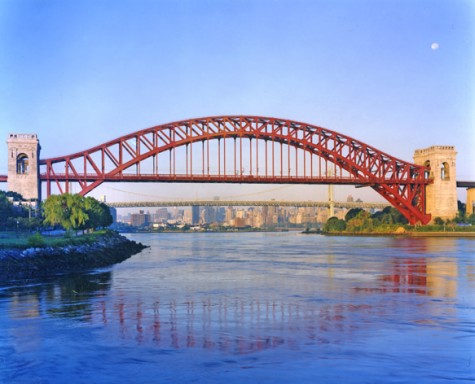
By Dave Frieder
Sept. 8, 2016 By Hannah Wulkan
Hell Gate Bridge is celebrating its 100th birthday this year, but instead of cake and presents the Greater Astoria Historical Society will be hosting walking tours, lectures, and providing historical retrospectives.
The bridge has long been an emblem for Astoria and Western Queens, as well as a route for Amtrak’s trains connecting Boston and Washington. Given that, the Greater Astoria Historical Society is putting together a year-long program to celebrate its history and meaning.
“The Hell Gate bridge is more than just a bridge, it’s a statement,” said Bob Singleton of the Greater Astoria Historical Society. “It’s a statement that the people who built that bridge built something far greater than what was needed, and in doing so achieved one of the greatest engineering feats anywhere, a bridge that after 100 years is just getting in to its own.”
The centennial celebration will officially kick off with a lecture and exhibit opening on October 3 in the GAHS lecture hall at 6:30 p.m., which will showcase historical and contemporary photographs of the bridge over the past 100 years.
Dave “the Bridge Man” Frieder, a photographer and bridge connoisseur who has climbed nearly every bridge in the area, will speak on the construction of the bridge and his experiences with the structure. Singleton will speak on the importance of the bridge, and the event will also feature a talk by Alan Renz, the grandson of the bridge designer Gustav Lindenthal.
There are events scheduled to celebrate the bridge through the winter and in to spring, Singleton said, likely culminating with a celebration in June or July to cap off the centennial. He explained that events would range from walking tours of the bridge, including one planned for May walking across the bridge from Harlem to the Bohemian Hall in Astoria, to lectures and even an “Instagram meet” planned for March, gathering people together to photograph the bridge.
The GAHS is also putting together a teacher’s guide to the bridge, hoping to draw interest from all age groups.
Singleton stressed that though the celebration marks 100 years for the bridge, it is nowhere near the end of its life. “I think that in the next century the Hell Gate Bridge will really come in to its own. It is a bridge that was built in the early 20th century for the 21st century,” he said.
Some events are still in the planning process, but there will be something planned for each month that commemorates and celebrates a different aspect of the bridge. For a full and up to date schedule of events and more information on the centennial celebration, visit the GAHS website at
http://astorialic.org/events.php?id=1173.
One Comment

Unfortunately the bridge hasn’t been that color of red for a very long time. Would be nice if it was painted for its birthday.